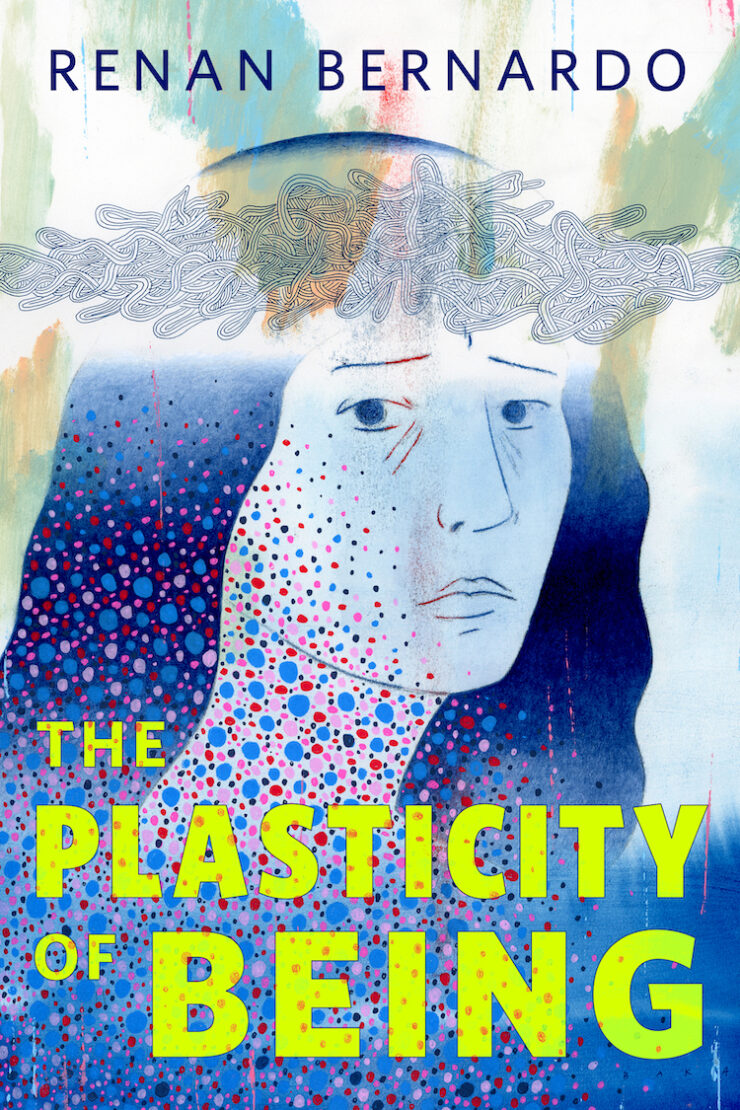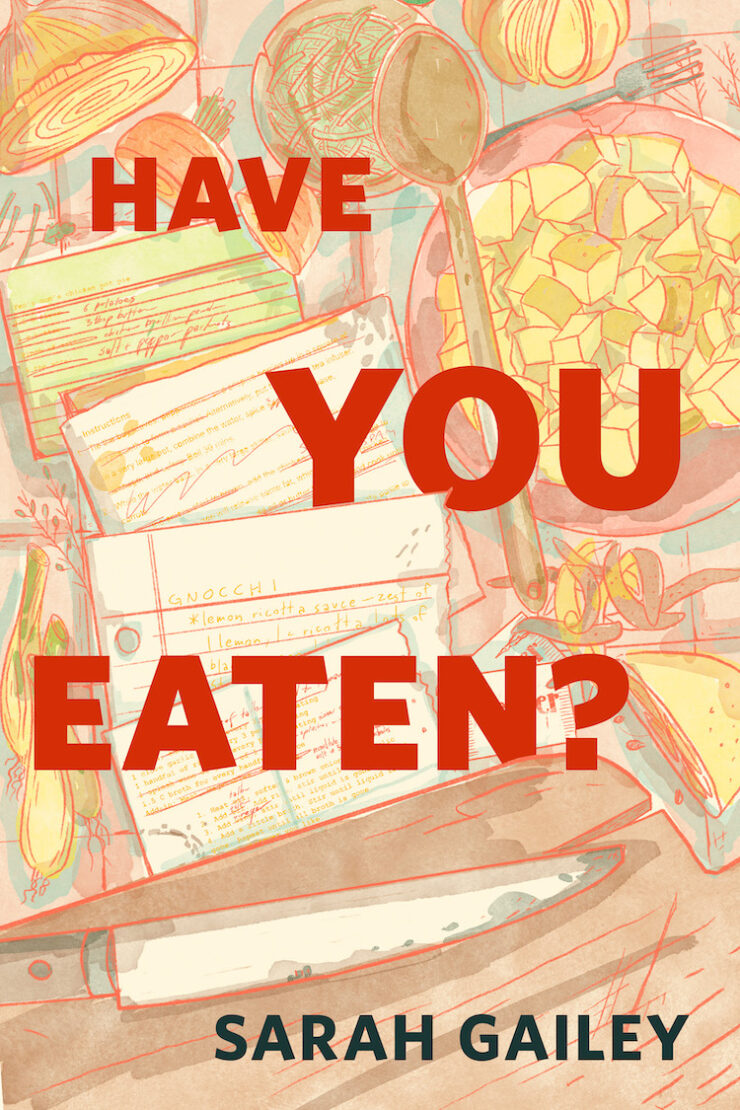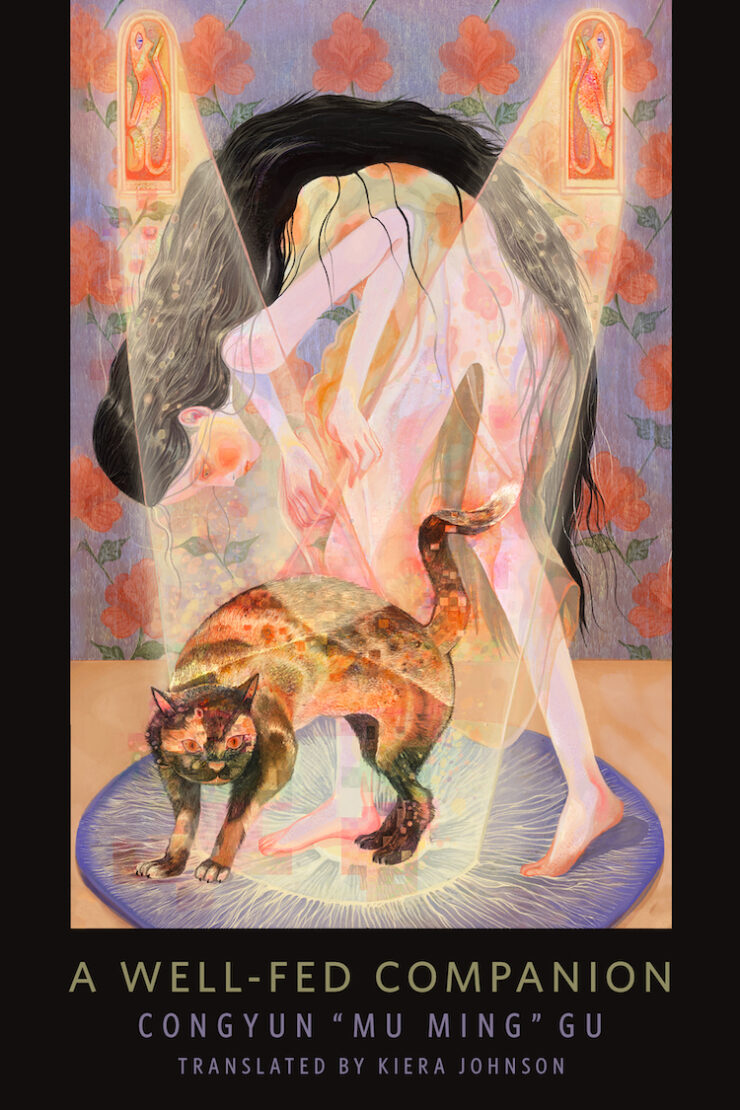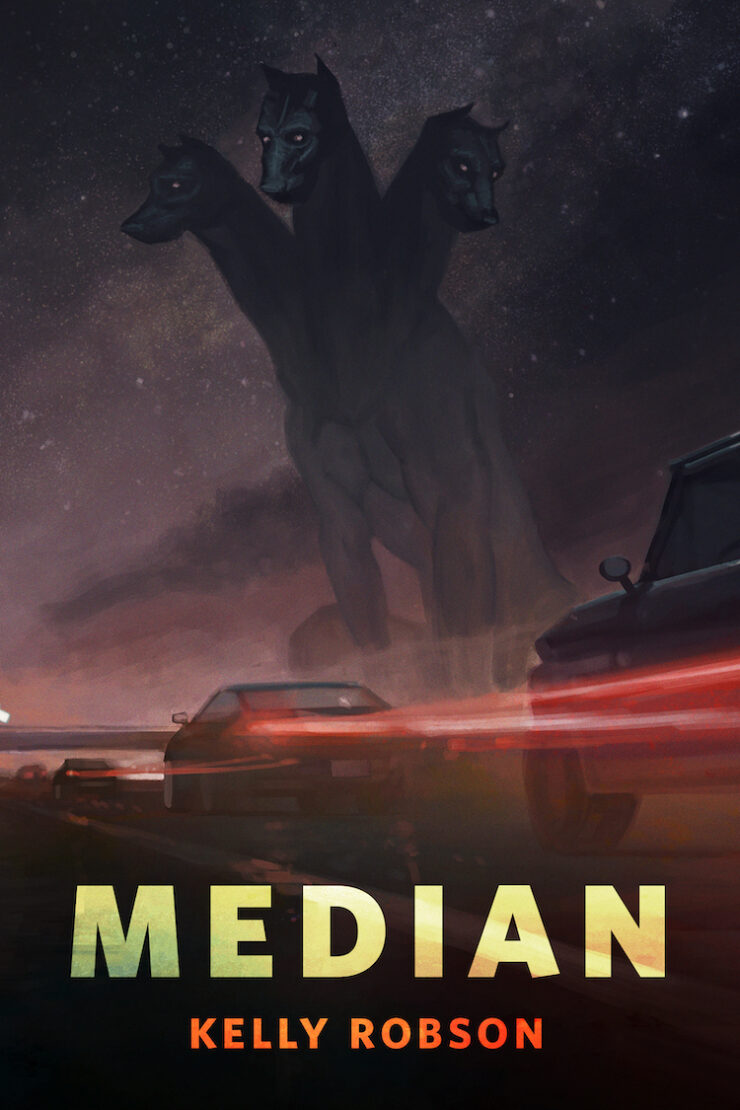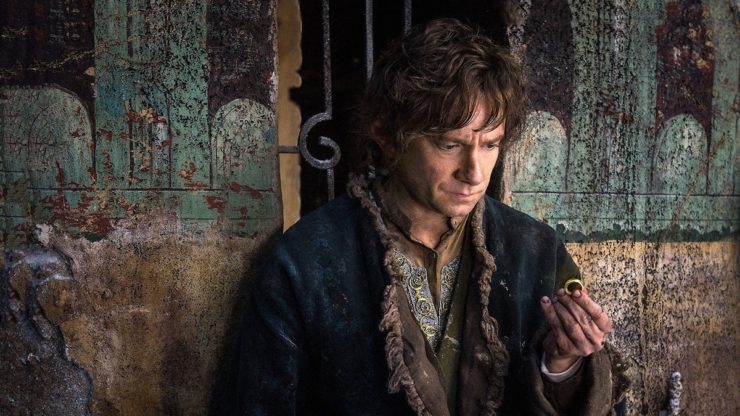The extended edition of The Hobbit: The Battle of the Five Armies is rated R for violence. That’s right: the third movie adaptation of the classic children’s book is rated R. Meaning that if anyone under the age of 17 wished to see this adaptation of a children’s adventure novel, they’d need to be accompanied by an adult. This fact has gnawed at my mind, like some deep nameless thing, since I learned about it. Granted, I have not seen the extended edition of this movie, nor the extended versions of any of the other Hobbit movies. The extended editions of The Lord of the Rings movies are essential and make the movies all the richer, but I don’t have any desire to spend more time with the Hobbit trilogy than is strictly necessary. And I certainly see no reason to see an R-rated version of The Hobbit.
It’s not, of course, that children’s stories can’t be told for an adult audience. Many fairy tales are deeply brutal and bloody in their earliest tellings. Artists like Alan Moore have taken the subtexts of children’s classics like Alice’s Adventures in Wonderland and reimagined them in very adult ways. But The Hobbit is not an old fairy tale from the Brothers Grimm, nor are Jackson’s movies reinterpreting J.R.R. Tolkien’s book in new, experimental ways: they are fairly straightforward adaptations. That one of the movies ended up meriting an R rating means that something went oh so very awry. We are a long way from the cinematic masterpieces of the Rings trilogy.
We’ve already covered what went wrong, and what also went right, in An Unexpected Journey and The Desolation of Smaug. And if those movies felt a little stretched, like butter over too much bread, Battle is positively Gollum-like in its desiccation. The first two movies have much to recommend them, as much as they go astray at times, but I’ve started and scratched this review a dozen times because it’s so difficult to dig into this third one. For as long and busy with plot and action as the film is, not much actually happens.
The film opens with its one good scene, the attack of the dragon Smaug on Lake-town. Smaug is, as mentioned previously, gloriously realized, and his devastation of Lake-town is beautifully done, as is the tension as Bard fumbles for a black arrow with which to kill the beast. Sadly, when Smaug dies, so does any reason to continue watching the movie.
After Lake-town is destroyed, the survivors on the shore rally around Bard as their new leader, opportunistically helped by Alfrid Lickspittle (yes, he’s really named that), the least essential character in Middle-earth. We also get a few shots of Lake-towners of Color who, despite the trilogy’s nine hours of film, never speak a word. The Master of Lake-town was apparently hoarding their lines along with the town’s resources. Bard leads the remnants to the ruins of Dale and demands the Dwarves offer restitution, seeing as they stirred up the dragon, despite his warnings. (He might offer up a scathing prayer to Manwë while he’s at it, since the Quest of Erebor seems to have been his idea.)
Thorin refuses as he’s become increasingly “gold-sick” and paranoid. The fabled Arkenstone is missing (Bilbo pocketed it after sensing Thorin had become unglued) and Oakenshield suspects he’s been betrayed from within. This proves fortuitous for the world, as his vicious delusions lead him to give Bilbo a mithril shirt, thinking Bilbo is his last ally and needs protectors from the conspirators. It’s an act of unhinged paranoia that will save the world a few times over some six decades later after Bilbo gifts the shirt to Frodo. Thanks, Thorin!
Thranduil shows up on his moose and demands his own share of the treasure. Men and Elves form an alliance against the Dwarves, who are holding out for help from Thorin’s cousin Dain. Legolas and Tauriel teleport to Mount Gundabad, see some bats, and then teleport back.
Suffering most of all is Gandalf, who is stuck in a cage in Dol Guldur, Sauron’s fortress in Mirkwood. But then Elrond, Saruman, and Galadriel show up and fight the Ringwraiths in a battle that truly does look like something out of a video game, specifically one that charges quarters. The film reaches its creative nadir in this scene, when Sauron appears and Galadriel Goes Green.
Let’s pause here for a moment. Galadriel’s Big Green Glow-Up in Fellowship of the Ring has a very specific context. She’s not demonstrating a special move she has. She’s not going Super Saiyan. She’s casting a vision of what she would become if she took the One Ring and became a Dark Queen, “stronger than the foundations of the earth!” Galadriel, it should be noted, does not have the One Ring in this scene in Battle of the Five Armies. She doesn’t even know it’s been found. Her Hulk Out is entirely fan service, entirely referential. It makes zero sense in the narrative world of the movie. “All shall love me and despair!” became a popular image and meme after Fellowship came out, so here it is again. Don’t you remember it? Don’t you love it? Enjoy!
Galadriel’s Mint-Sadako impression somehow works, Sauron skedaddles, and Gandalf remembers he left some Dwarves and a hobbit in charge of killing a dragon, and rushes off to Erebor. He arrives just in time for Bilbo to abscond with the Arkenstone and hand it over to Thranduil and Bard. Thranduil is, at least, delightfully haughty as always, and his, “You started this, Mithrandir. You will forgive me if I finish it,” is the film’s best line. Lee Pace brings so much danger to his line readings and here, especially, you can get a sense of his long and uneasy relationship with Gandalf. The Elvenking seems positively delighted to be able to stick it to this Maia from the Uttermost West, but is also wise enough not to gloat too much. It’s a glimmering jewel of a line, shining all the brighter for the narrative haze around it (I imagine the Amazon Lord of the Rings show will chart its own course through Middle-earth, but it would be wonderful to see Pace return as Thranduil—who’s been alive since the First Age—since for my money, he ties with Cate Blanchett for the award of “Best Performance as an Eldar in a Feature Film”).
Dain and his dwarvish soldiers from the Iron Hills arrive and prepare to make war on the Elves and Men besieging his cousin Thorin. Billy Connolly sadly gets little screen time as Dain, but he’s wonderfully memorable, especially atop his war-pig. Frankly, it hurts to give a negative review to any movie that features Billy Connolly swinging a war hammer and threatening people while riding a pig, but here we are.
Before the Battle of the Three Armies can begin, two more show up: those led by Azog and Bolg. Azog arrives via tunnels burrowed by “wild were-worms,” creatures that, in the book, Bilbo briefly mentions during the “unexpected party.” The appearance of the wild were-worms is fine for what it is. As the popularity of the new Dune movie proves, people cannot get enough giant cinematic worm action. They’re well-designed, fit with the plot of the book (where the goblin armies arrive at Erebor via secret tunnels), and use an element mentioned from the book, one that many a Tolkien fan (including me) has long tried to imagine.
But to me at least, they also epitomize the flaws of the Hobbit movie trilogy. In the book, Bilbo mentions the worms off-handedly in a Tookish fit, insisting that if the Dwarves need him to, he’s perfectly capable of going all the way to “the East of East to fight the wild were-worms in the Last Desert.” Unlike other briefly mentioned locales in the book, like the Mines of Moria or the ruined city of Gondolin, Tolkien never writes further about the Last Desert. It’s never mapped or described in more detail. It’s a fairy-tale place, in other words, both to the reader and to the characters. Its ambiguity and the image of “wild were-worms” aren’t meant to suggest the actual topography of Tolkien’s world, but Bilbo’s inexperienced views of it. Do the wild were-worms exist? Maybe, but the point is Bilbo doesn’t know, and neither do we. He’s just spinning off dangerous sounding places to say he’s hobbit enough for the burglary job.
Tolkien understood that some things must be left to the reader’s imagination: “Even in a mythical age, there must be some enigmas, as there always are.” An author, even one as meticulous in their worldbuilding as Tolkien, cannot fully map out an entire otherworld, especially one set in a distant past. The wild were-worms are Tolkien’s narrative version of “hic sunt dracones,” and an important one, since the book includes an actual map locating the precise location of a dragon. When you know exactly where dragons live in a story, you need something else out there nibbling away at the margins.
Jackson’s inclusion of the wild were-worms is symptomatic of speculative fiction filmmaking in the Golden Age of the Geek, an age that Jackson’s Rings movies helped usher in. No stone can be left unturned, no intriguing little bit of worldbuilding can be left unfilmed or unfranchised. Nothing is left to the imagination. It’s like riding Space Mountain with the lights on.
That might be forgivable if it led to anything interesting, but everything in Battle feels rote and tired. The battle in Battle drags on and on, a war fought not to extend territory but the film’s run time, and while we get some cool troll designs courtesy of Weta (I particularly like the ones being piloted, cruelly, by hook-wielding Orcs), none of it has any impact. Kili dies, Tauriel grieves, Thranduil has a change of heart, and Legolas decides to go wandering with the Rangers. Thorin also dies in a “Battle of the Ice” against Azog that is, like everything in these movies, both beautifully rendered and stretched out to the point of drudgery.
As in the book, the Eagles arrive, along with the briefest glimpses of Radagast and Beorn, to remind us that, oh yes, they were also in these films. Thorin and Bilbo make amends before the former dies, and then Bilbo returns home to find his possessions being auctioned. When he uses his contract as proof of his identity, the auctioneer asks who Thorin Oakenshield is, and Bilbo says, “He was my friend.” Sixty years later, Gandalf knocks at the door, and The Lord of the Rings movie trilogy begins, in case you forgot there were nine other (far better) hours of hobbit action on film out there to watch.
As I’ve written these Movies of Middle-earth reviews, I’ve tried to imagine what the movies would look and feel like to a viewer (I call her Elanor) who first watched the 1977 Hobbit movie on TV and saw the pop culture landscape change around her in the following decades. The ending, as it stands now, is as bittersweet as one of Tolkien’s: The nerds have triumphed and reign supreme, but with that comes certain disappointments. For a Tolkien lover like Elanor, it’d be thrilling that Middle-earth finally gained such pop cultural power that Hollywood studios invested hundreds of millions of dollars in making nine hours of The Hobbit adaptation to release in theaters, and that Amazon reportedly paid $250 million for the rights to the Second Age show that debuts next year. But Hollywood is reshaping Middle-earth as much as Middle-earth has reshaped Hollywood, and there’s no better proof of that than the overcooked, overexposed, overlong, overly violent The Battle of the Five Armies. Like Bilbo, we set off on an exciting adventure, and now we’ve come to a weary reckoning. The magic that animated version of The Hobbit promised in a wood-paneled basement forty years ago is gone. There’s no going home again. The furniture’s been auctioned off, and the spoons are missing.
Still, I can’t completely dismiss the Hobbit trilogy. When my wife, son, and I watched them over a succession of nights, on the couch in our wood-paneled basement no less, they managed to entertain us well enough. While The Lord of the Rings movies have a dragon’s hoard worth of cinematic treasures to them, the pleasures in The Hobbit movies are harder to come by, but they’re there if you look closely, like little golden rings glimmering in the dark.
Austin Gilkeson has written for Tin House, McSweeney’s, Vulture, Foreign Policy, The Toast, and other publications. He lives just outside Chicago with his wife and son.


